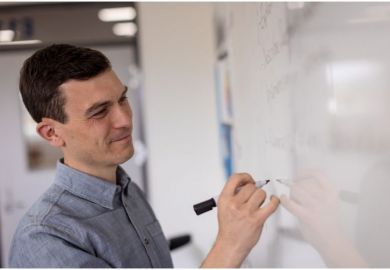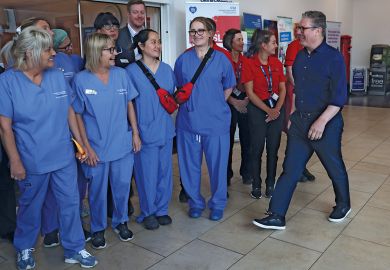Dartington has a special, quirky place in British artistic and educational life, which comes from the uniqueness of its two founders.
Leonard Elmhirst, who hailed from a Yorkshire landowning family, was an agricultural economist studying at Cornell University in the US in the early 1920s when he met the leftwing East Coast heiress Dorothy Whitney Straight, whose chief passion was for the arts. After a short but inspiring spell working on "rural reconstruction" with Rabindranath Tagore in a village near Tagore's new university at Santiniketan in Bengal, Elmhirst married Whitney Straight and, on Tagore's advice, they settled in Devon and began to use Dorothy's fortune to create a wide-ranging educational centre on an estate based around a 14th-century manor house in Dartington.
From the beginning in 1926, the arts were central to the Elmhirsts' concerns. They combined a desire for artistic standards with a second desire to use the arts to help create a "lively and humane society", notes Peter Cox in his brief account of Dartington's first half-century. This immediately introduced a tension between the professional and the amateur, since "in the world of the arts, social or educational concerns are so often seen as a dilution of artistic integrity". But after a long struggle, with the help of gifted sympathisers such as Imogen Holst, Benjamin Britten and William Glock, Dartington eventually established itself - especially in music - and became Dartington College of Arts.
"We were the first to study the organisation of the arts in England and Wales, to train musicians for work in rural areas, to break away deliberately from the paternalistic tradition of residential colleges, to build a music school with sound-insulated studios, to acquire and sustain our own string quartet and our own gamelan, to include Indian music within an honours degree course in music, to create degree and Dip. H.E. courses to study the arts in their social contexts."
That Dartington did all this owes a lot to Cox himself, who arrived there in 1940 as a conscientious objector, became the college's founder principal in 1961, and retired in 1983. Having worked closely with the Elmhirsts, who died in 1968 and 1974, Cox surely knows more about Dartington than anyone else alive. His much fuller account is expected to be published in 2005.
"My job was essentially that of an enabler," he writes. Someone who could bring together artistically gifted teachers and students from many backgrounds and countries and foster performance and learning without stifling either activity with bureaucracy.
Sounds idealistic? Well it was. But much of the time it worked because there was a practical side to the Elmhirsts, to Cox and many of the others whose names and photos are scattered through this booklet.
After the Second World War, it was clear that Dartington could not survive as a private institution. Cox's energies went into working with local government, the Department of Education and the southwest regional arts association (which he helped to found), as he remoulded Dartington from a privately funded institution into one relying on public funds. Today, ironically, were he still the principal, he would probably have to push it in the opposite direction.
Andrew Robinson, literary editor of The Times Higher , has written books on Rabindranath Tagore.
Origins
Author - Peter Cox
Publisher - Dartington College of Arts
www.dartington. ac.uk
Pages - 48
Price - £11.50
ISBN - 0 902386 19 0
Register to continue
Why register?
- Registration is free and only takes a moment
- Once registered, you can read 3 articles a month
- Sign up for our newsletter
Subscribe
Or subscribe for unlimited access to:
- Unlimited access to news, views, insights & reviews
- Digital editions
- Digital access to THE’s university and college rankings analysis
Already registered or a current subscriber?



